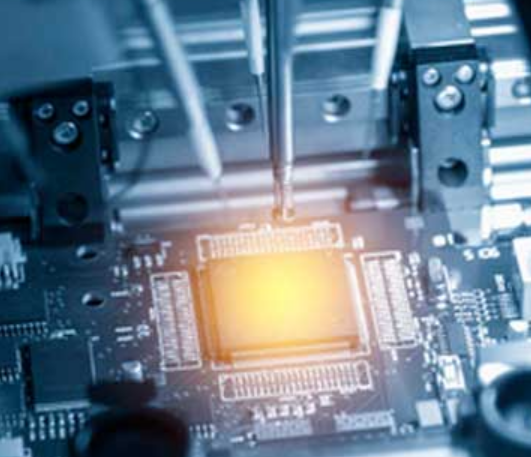- Ameya360 Component Supply Platform >
- Trade news >
- Understanding Moisture Sensitive Levels (MSL) in Electronic Components
Understanding Moisture Sensitive Levels (MSL) in Electronic Components
Moisture Sensitive Levels (MSL) play a crucial role in the handling and reliability of electronic components, especially those that are sensitive to moisture-induced damage.

The MSL designation provides valuable information about the susceptibility of a component to moisture absorption and outlines guidelines for proper storage and handling.
In this article, we explore the significance of Moisture Sensitive Levels, the risks associated with moisture exposure, and best practices for mitigating potential issues.
The Impact of Moisture on Electronic Components
Moisture can have detrimental effects on the performance and reliability of electronic components, particularly those with moisture-sensitive materials like ceramics and certain plastics. When exposed to high humidity or moisture, these materials can absorb water, leading to various issues such as:
Popcorn Effect:
One common consequence of moisture absorption is the “popcorn effect,” where trapped moisture turns into steam during the solder reflow process. This can cause internal delamination, cracks, or even physical damage to the component.
Electrochemical Migration:
Moisture can facilitate the formation of conductive paths between metal traces, leading to electrochemical migration. This can cause short circuits and compromise the functionality of the component.
Reduced Electrical Performance:
Moisture absorption may alter the electrical properties of certain materials, affecting the overall performance and reliability of the electronic device.
Decreased Solderability:
Moisture-sensitive components may experience reduced solderability, making it challenging to achieve proper solder joints during assembly.
Moisture Sensitive Levels (MSL)Moisture Sensitive Levels are a classification system defined by the Joint Electron Device Engineering Council (JEDEC) to categorize electronic components based on their susceptibility to moisture damage. The MSL rating is represented by a numerical value, ranging from MSL 1 to MSL 6, with MSL 1 being the least sensitive and MSL 6 the most sensitive.
● MSL 1:
Components with MSL 1 designation are considered the least sensitive to moisture. They have a long floor life and are less prone to moisture-related issues during assembly.
● MSL 2-3:
Components classified as MSL 2 or MSL 3 have moderate sensitivity to moisture. They may require additional precautions during storage and handling to prevent moisture absorption.
● MSL 4-5:
Components with MSL 4 or MSL 5 designations are highly sensitive to moisture. Strict guidelines, including vacuum-sealed packaging and rapid assembly, are necessary to minimize the risk of damage.
● MSL 6:
MSL 6 represents the highest level of moisture sensitivity. Components in this category are extremely susceptible to moisture, and special precautions, such as baking before use, are essential.
Best Practices for Handling Moisture-Sensitive Components● Storage Conditions:
Store moisture-sensitive components in a controlled environment with low humidity levels. Use desiccant packs or dry storage cabinets to maintain dry conditions.
● Monitoring Shelf Life:
Keep track of the shelf life of components with MSL ratings. Components should be used or baked before the expiration of their floor life.
● Baking Before Use:
For components with higher MSL ratings, a pre-bake process may be necessary before assembly to remove absorbed moisture. Follow the manufacturer’s guidelines for baking conditions.
● Vacuum-Sealed Packaging:
Use vacuum-sealed packaging for components with higher MSL ratings to prevent moisture ingress during storage.
● Humidity Indicator Cards (HIC):
Employ Humidity Indicator Cards to visually monitor the humidity levels inside sealed packages. This helps assess the effectiveness of moisture protection measures.
● Reflow Profile Considerations:
Adjust reflow profiles to minimize the exposure of moisture-sensitive components to high temperatures during soldering.
● Training and Awareness:
Ensure that personnel involved in handling electronic components are trained on MSL classifications and proper handling procedures to prevent moisture-related issues.
Conclusion
Moisture Sensitive Levels are critical indicators that guide the handling and processing of electronic components in the manufacturing and assembly processes. Understanding the MSL rating of components allows for the implementation of effective moisture protection measures, ensuring the reliability and longevity of electronic devices. By following best practices in storage, handling, and assembly, manufacturers can mitigate the risks associated with moisture-induced damage and deliver high-quality products to the market.
Online messageinquiry
- Week of hot material
- Material in short supply seckilling
| model | brand | Quote |
|---|---|---|
| RB751G-40T2R | ROHM Semiconductor | |
| MC33074DR2G | onsemi | |
| TL431ACLPR | Texas Instruments | |
| CDZVT2R20B | ROHM Semiconductor | |
| BD71847AMWV-E2 | ROHM Semiconductor |
| model | brand | To snap up |
|---|---|---|
| IPZ40N04S5L4R8ATMA1 | Infineon Technologies | |
| BP3621 | ROHM Semiconductor | |
| BU33JA2MNVX-CTL | ROHM Semiconductor | |
| TPS63050YFFR | Texas Instruments | |
| ESR03EZPJ151 | ROHM Semiconductor | |
| STM32F429IGT6 | STMicroelectronics |
- Week of ranking
- Month ranking
Qr code of ameya360 official account
Identify TWO-DIMENSIONAL code, you can pay attention to


Please enter the verification code in the image below:






















